Teach your students how to subtract fractions with like denominators using a variety of strategies with this comprehensive slide deck.
Teach How to Subtract Fractions with Like Denominators
Marcus plans to ride his bike to the park. He needs to travel five-sixths of a mile to reach his destination. If he has already bike for two-sixths of a mile, how much further does he need to travel?
To work out the answer to this question, your students need to understand that the question involves the subtraction of fractions with like denominators. Like denominators are fractions that have the same denominator, e.g. two-sixths and five-sixths.There are several strategies that students can use when performing these types of operations with fractions. These include:
- Fraction Tiles – Fraction tiles are hands-on tools that can be used to visually construct and solve problems with fractions.
- Fraction Circles – Fraction circles are diagrams that can be drawn by students to visually represent problems with fractions.
- Number Lines – Number lines are linear representations of a fraction that can be used to solve subtraction problems.
- Fraction Notation – With an understanding of fraction notation comes the ability to solve subtraction problems using the standard algorithm.
To help your students better understand these four strategies for adding fractions with like denominators, the expert teacher team at Teach Starter has created this 25-slide teaching presentation. The presentation explores each strategy in detail using annotated examples of each process. It also includes collaborative review activities that the class can work through together as a means of checking for understanding.
This slide deck downloads in a Google Slides format. Simply project on your screen for a paperless lesson on fractions!
Differentiate This Fractions PowerPoint
If you’re looking for ways to differentiate this activity, here are some suggestions from our experienced teacher team:
- Encourage Hands-On Learning – Subtracting fractions is a topic that lends itself extremely well to hands-on learning. When engaging with the presentation, be sure to provide students with physical manipulatives such as fraction strips, blank number lines and mini-whiteboards. These aides will help students to visually represent what can often be a rather abstract concept!
- Write a Word Problem – Have students connect the concept of subtracting fractions to the real world by writing word problems for some of the subtraction equations in the presentation. Students could share these with a partner to solve.
Download to Subtract Fractions with Like Denominators
Use the Download button to access the Google Slides version of this resource. (Note: You will be prompted to make a copy of the Google Slides presentation before accessing it.)
The slideshow does contain some simple animations so should be used in Presentation mode.
This resource was created by Brittany Collins, a teacher in Indiana and a Teach Starter collaborator.
Save Time with More Fractions Resources
Teach Starter is committed to helping you cut down on your planning time! Click below for more great resources created by our team to help you teach fractions to your students.
[resource:55564] [resource:2658142] [resource:5085212]
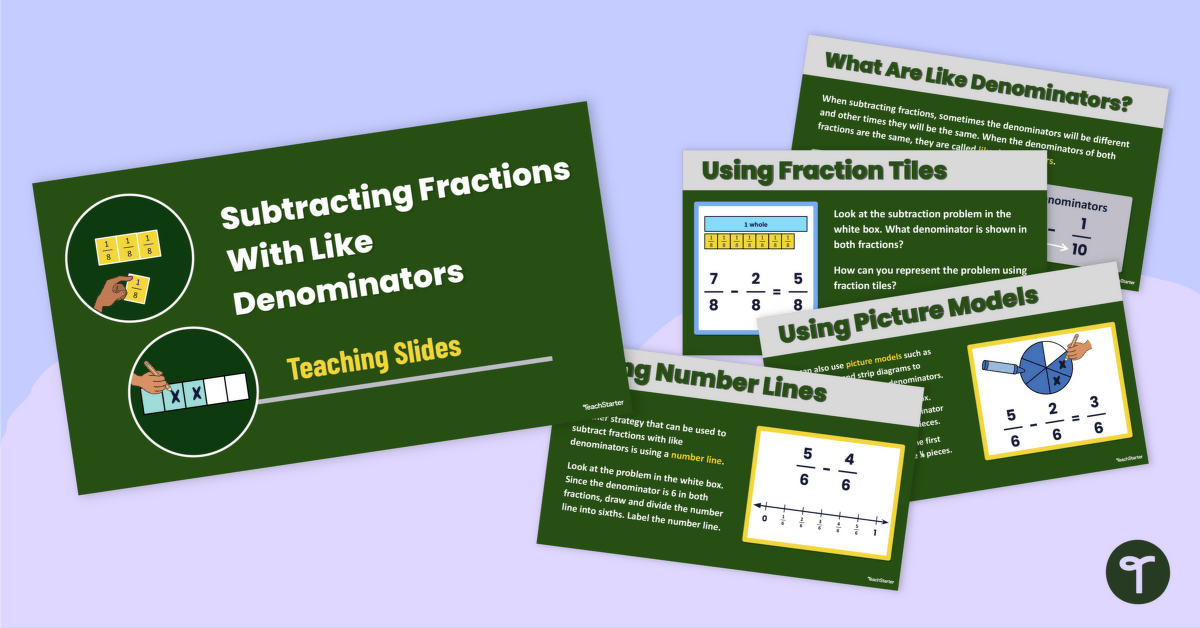

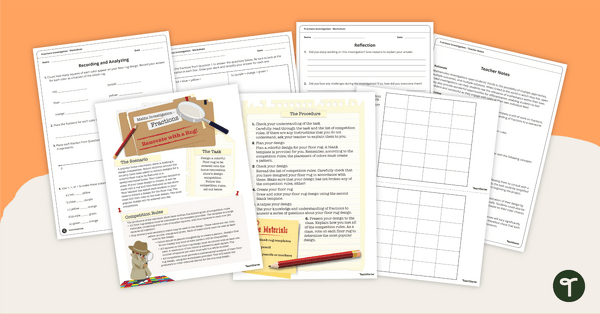

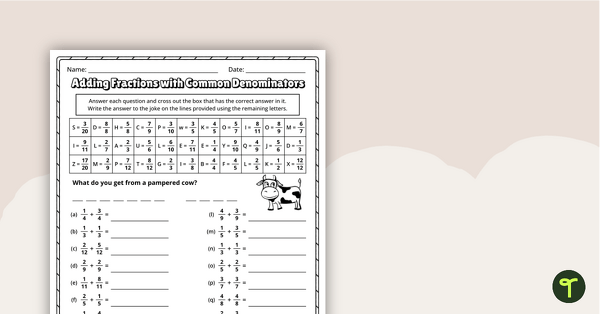
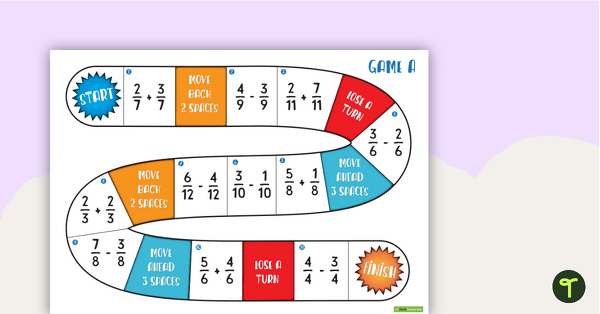
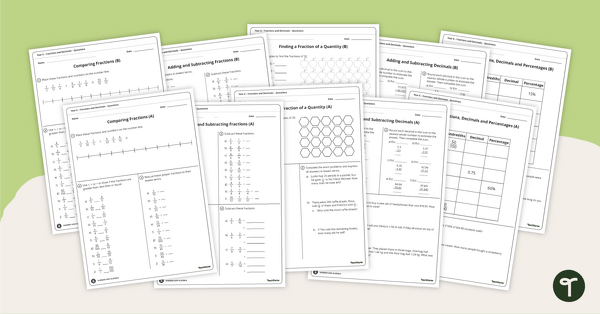
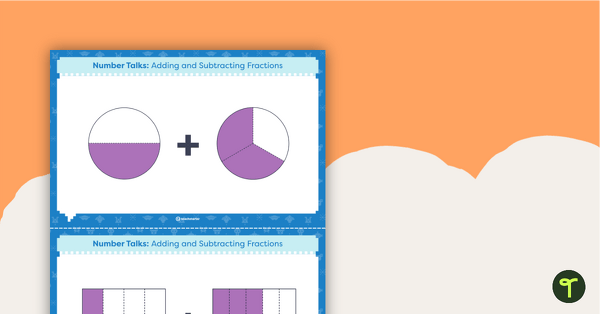
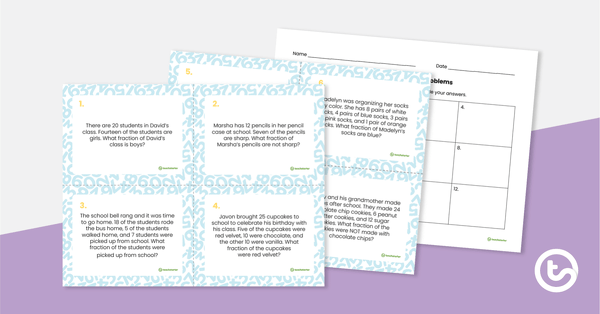
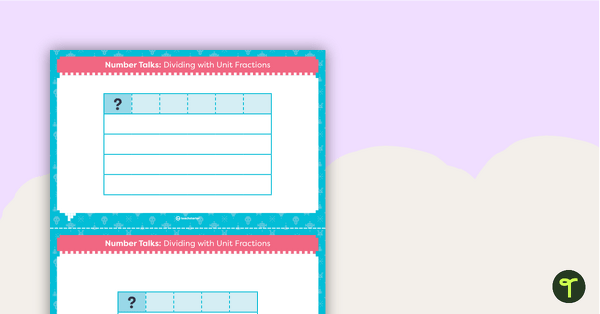
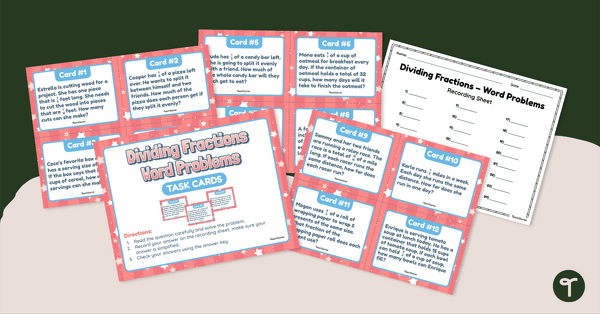
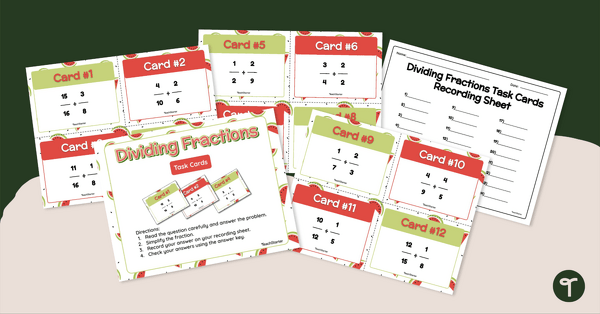
0 Comments
Write a review to help other teachers and parents like yourself. If you'd like to request a change to this resource, or report an error, select the corresponding tab above.